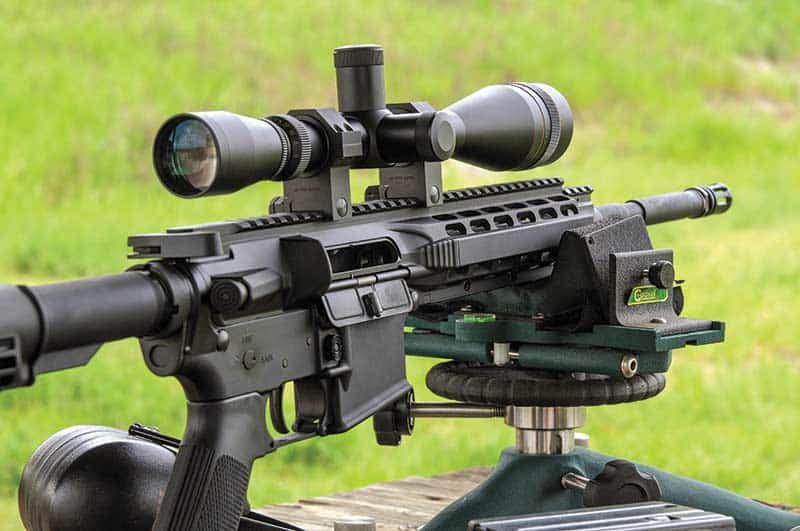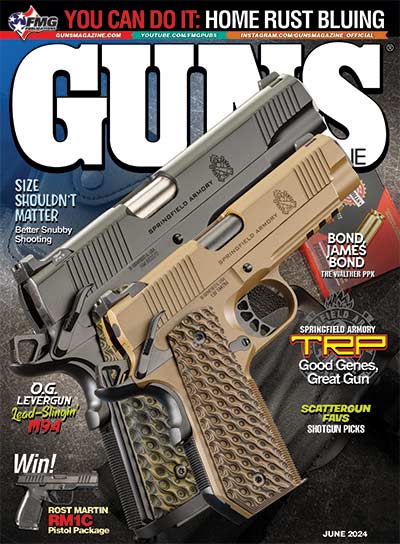‘Value’ Rifles
Who Is Buying All The New Guns?
One of the most obvious trends in sporting rifles over the past several decades has been the appearance of moderately priced “value” models, generally made with computerized machine tooling, minimal handwork and synthetic stocks. The concept isn’t new; there have been earlier examples of value rifles such as the Remington 721/722 models and the Savage 340 series circa 1950.
What is different today is the proliferation of such models and the way they dominate the market. To give just a few examples, we have the Remington 783, Savage Axis, Stevens 334, Mossberg Patriot, Browning AB3, Winchester XPR and the Ruger American. It got me wondering — who is buying these rifles?
“Just” Entry-Level
Conventional wisdom is these value models are primarily entry-level rifles, purchased by young or casual once-a-year hunters who can’t or don’t want to spend more money than necessary. Meanwhile, the more serious or discriminating (okay, older) hunters want more costly models such as the Ruger 77/Hawkeye, Remington 700, Winchester 70, Browning X-Bolt, Kimber, Sako, Weatherby Mark V. You’ll notice I haven’t included the Tikka T3/T3X, Weatherby Vanguard or Howa rifles in either group. That’s because they have neatly positioned themselves in the middle and have done very well as a result.
Conventional wisdom may be right, in fact I hope it is. Anything that encourages new rifle shooters and hunters is to be applauded. It must not be the only factor, as there just can’t be enough young or new shooters to support all these value rifle sales. A lot of us “seasoned” shooters have to be buying them as well. Just from personal observation, I really don’t see young shooters buying value rifles. I don’t know, maybe they have more money than my generation did at the same age. The younger hunters of my acquaintance buy mainly Tikka T3 and Weatherby Vanguard rifles, sometimes Winchester 70, Sako and Kimber.
I suspect it is the seasoned shooter who is the major buyer of value rifles. We buy them as gifts to get new shooters involved, or to use as “truck guns” to keep our precious walnut/blue steel models from dust and rust. From personal experience, I believe there is another factor in value rifle sales — the many new cartridges introduced in recent years.
There was a time, believe it or not, when gun and ammunition makers not only resisted adding new cartridges, they would have happily discontinued many of those already in existence. Rifle sales were brisk in the post-war economic boom. In the early post-WWII era, only a few new cartridges appeared, and when they did they were intended to fill perceived gaps. For a decade or so after the war, manufacturers sold every gun they could make.
Time Change
But it didn’t last. Firearms manufacturers have some special challenges. Rifles don’t wear out very quickly. If they are going to be safe and reliable they have to be at least fairly well made, and they last several lifetimes. A gun owner in the 1950s who had a .22, a “deer rifle,” and a shotgun was well equipped and not in the market for more guns. Once you have one bolt-action .30-’06 hunting rifle, you don’t need another. There just weren’t enough new shooters to sustain the market.
The success of the .222 Rem. cartridge (1950) had a profound effect on rifle enthusiasts and even more on rifle makers. Gunmakers found they didn’t necessarily have to find new buyers; current rifle owners were a prime market for more rifle sales. They just needed to keep rifle enthusiasts coming back for more. New cartridges kept these shooters interested. Where riflemen had been content with one centerfire rifle, now they were prepared to buy two, or five, 10.…
These modern value-priced rifles let us experiment with new cartridges without spending a fortune. Ruger American rifles (including the new Generation II) are available for many of the newer cartridges including .22 ARC, 6mm ARC, 6mm Creedmoor, 6.5mm Grendel, 6.5mm Creedmoor, 6.5mm PRC, 7mm PRC, .300 Blackout, .350 Legend, .400 Legend, .450 Bushmaster
Bringing It Home
I much prefer the Ruger 77/Hawkeye rifles over the American. I think they are smoother and more reliable, more aesthetically pleasing, and I like the integral scope bases. I’m not crazy about detachable synthetic magazines. As a tough, durable, reliable hunting rifle, it’s hard to beat the Ruger Hawkeye. But the Hawkeye currently has a suggested retail price of around $1,400. The American has a suggested retail of $600 to $750 depending on version. The American may not be quite as pretty but it surely is accurate. Which is why, when this old timer wanted to try out the 6mm Creedmoor and .350 Legend cartridges, I bought Ruger American rifles.
Or consider two Winchester rifles, both chambered for the newer 6.8 Western cartridge. Suggested retail of the prestigious Model 70 is about $1,300, with prices varying somewhat depending on version. The Winchester XPR suggested retail is about half as much, running from $600 to $650, again depending on which version.
I’m glad makers have found a way to provide great value for the money. But they dang sure better not stop making my beloved Ruger 77s and Winchester 70s!






